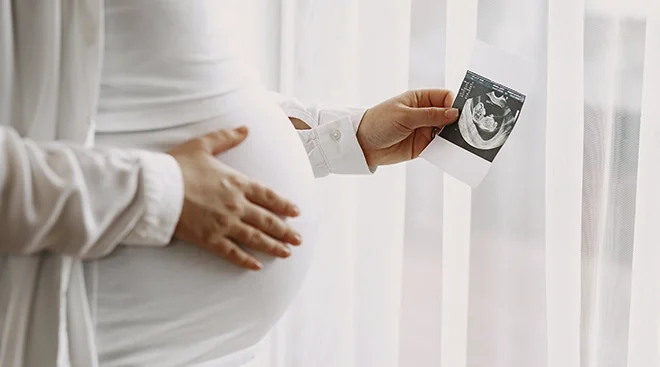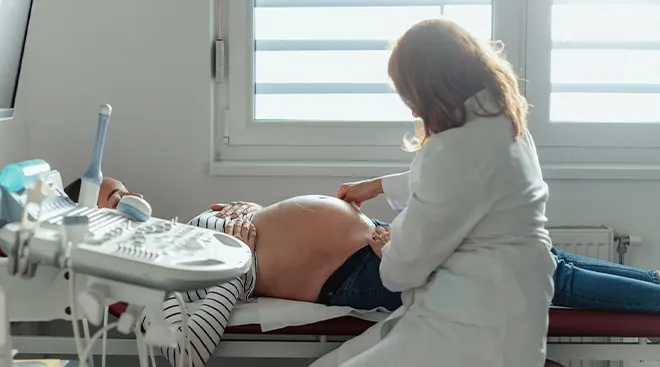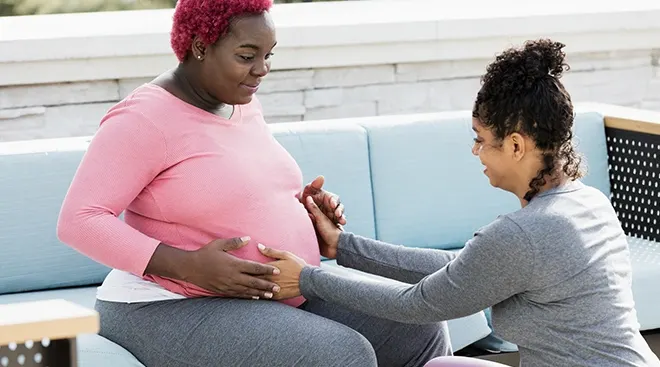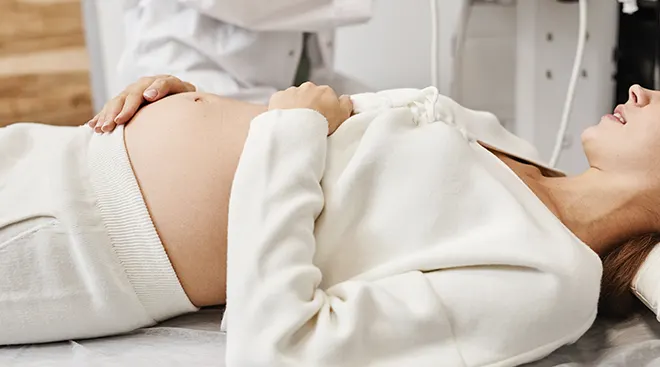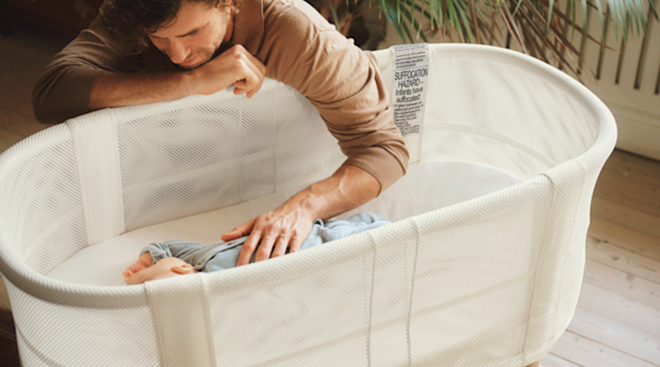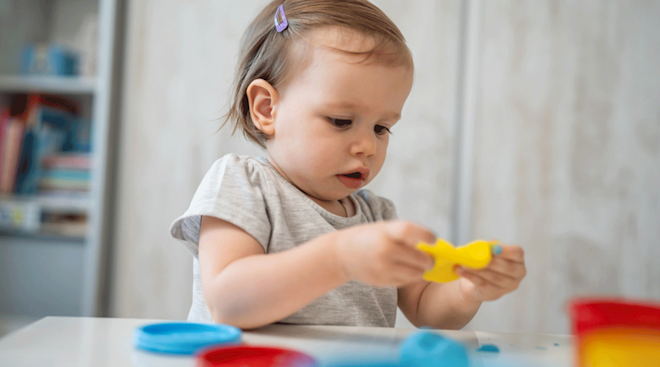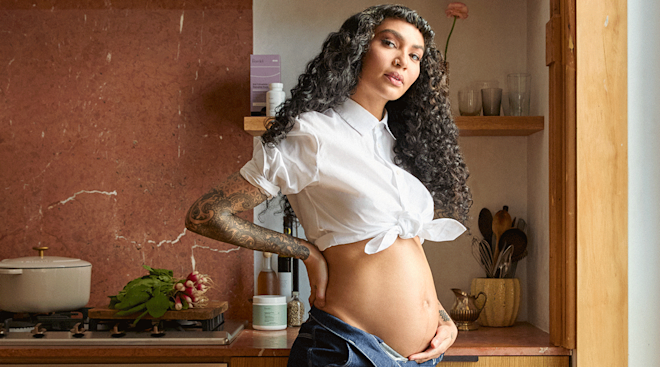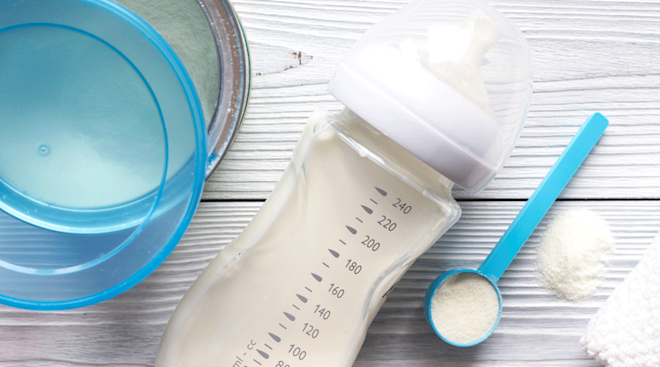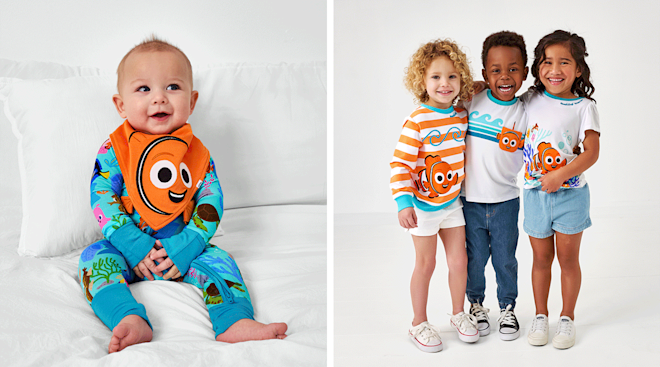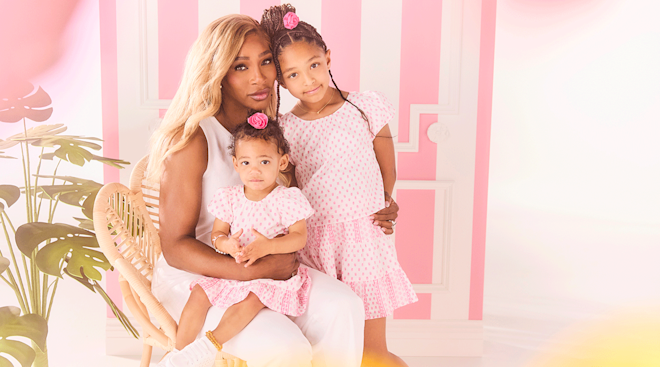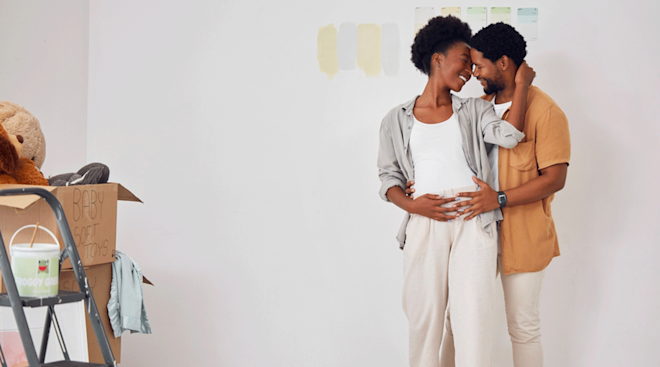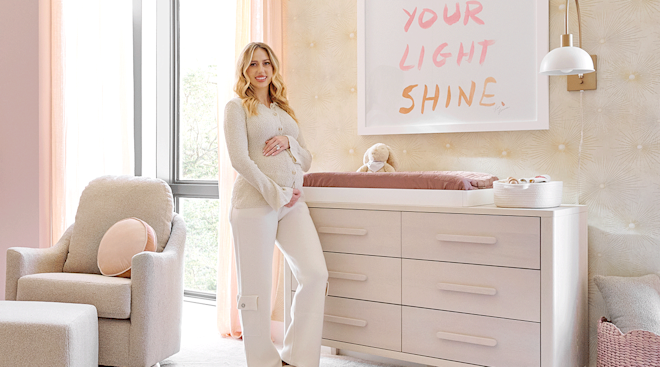What to Know About Fetal Development in the Third Trimester
Welcome to your third trimester! With the end nearly in sight, you may be wondering what finishing touches on baby’s development take place during the final countdown to labor and delivery. There are some exciting milestones that come with fetal development in the third trimester—baby gains more weight and becomes the cute, cuddly little person you’re eager to meet. Here, we asked two experts what you need to know about baby’s development as you approach your due date.
During the third trimester of fetal development, baby is preparing for delivery. According to Sherry Ross, MD, an ob-gyn and author of She-ology: The Definitive Guide to Women’s Intimate Health. Period., baby’s organs will continue to mature and their senses will start to fully function. But much of the fetal development in the third trimester also has to do with size, says Rebekah Mustaleski, CPM, a certified professional midwife and compression director at Motif Medical. “A large part of what the baby is doing from 28 weeks on is adding a layer of brown fat around their body. This fills out their skin and gives them the chubby baby look that we all love.”
According to Mustaleski, one of the most exciting milestones of fetal development in the third trimester is baby’s vision. “Their vision continues to improve after birth,” she says, “but during the third trimester, their eyes will develop well enough so that when they’re born they’ll be able to see contrast 8 to 10 inches away—which is just about how far away your face will be when you’re holding them!”
Some other exciting milestones of fetal development in the third trimester, according to the experts, include:
-
Baby’s hair, fingernails and toenails continue to grow (until—and past—labor and delivery).
-
During the third trimester, baby’s ear cartilage gets firmer, their gums become more rigid and their skin begins to get smoother. Their bones also continue to harden.
-
Baby loses their lanugo (usually around 31 weeks). Lanugo is fine hair that grows all over baby’s body in utero to protect their skin from amniotic fluid. “Babies who are born at 37 weeks or earlier might still have some of these fine hairs on their shoulders,” Mustaleski says, “but most term babies have lost it all before birth.”
-
Towards the end of the third trimester (around 38 weeks, baby starts to shed their vernix caseosa, a white coating that protects their skin in utero. However, you’ll likely see some of this during childbirth.
-
Baby continues to practice their breathing in utero. Their circulation and immune systems are largely functional by the end of 36 weeks.
-
Baby starts to have coordinated reflexes, including: sucking, swallowing, opening and closing their eyes; and turning their head. They also practice their grasp by holding their feet or the umbilical cord.
-
Baby is responsive to light, touch and sound (including your voice!). In fact, baby’s five senses are likely largely functional by the end of 31 weeks.
-
Baby develops organ maturity at the end of 36 weeks, especially for their brain and lungs. However, baby’s organs, including their liver and kidneys, will continue to mature until—and after—childbirth.
-
For male babies, the testicular descent into the scrotum is completed during the third trimester.
-
Baby starts to develop their first poop, called meconium around 37 weeks.
Around 32 to 36 weeks, baby will actively begin to move and change position to get ready for birth. “It’s extremely important to know the position of the baby when a woman goes into labor during the third trimester,” says Ross, as this could affect the type of delivery she has.
There are three positions baby could be in towards the end of the third trimester:
-
Vertex: Also known as Cephalic or, more commonly, “head down.” This is the position 95 percent of babies are in at full term, Ross says. Many moms report feeling “baby drop” as baby’s head starts to move further down their pelvis. Having baby’s “head down, facing your back, with the chin tucked to its chest as [they] prepare for labor,” is the ideal position for birth, Ross says. While you want baby to be facing the back of Mom’s body in the head-down position, if baby’s facing Mom’s belly—aka “sunny side up”— it’s not an issue: You can still deliver vaginally (it may just be a bit more uncomfortable for Mom!).
-
Breech: This position occurs when baby’s feet or buttocks are pointing towards the birth canal, rather than their head. This postion occurs in 3 to 4 percent of term pregnancies, Ross says. If baby is found to be in breech position during the 36-week ultrasound, you can have your ob-gyn attempt to move baby into the head down position through external cephalic version (ECV), Ross explains. But don’t stress—baby could flip into the head down position on their own by the time labor starts, Mustaleski adds.
-
Transverse lie: This position is when baby’s spine is “perpendicular to the long axis of the uterus,” says Ross. In other words, it’s when baby’s head is pressing against one side of Mom’s body, while their feet and bottom are pressing against the other side. This position is rarest and occurs in one percent of term pregnancies, Ross says.
During your ultrasound appointments, you may hear your technician or ob-gyn use abbreviations like “LOA” or “RST.” These are used to identify baby’s position in utero. Mustaleski breaks down the meaning behind these abbreviations below:
-
L and R: These refer to Mom’s left or right side and signify baby is either on your left or right. “The absence of this letter means your baby is either all in the front or all in the back,” she adds.
-
O or S: These are the next two possible letters in the abbreviation and refer to the occiput (baby’s head) or sacrum (baby’s bum).
-
A, T or P: These letters describe where baby’s back is. “‘A’ means anterior (baby’s back is along your belly; ‘T’means transverse (baby’s back is along your side); and ‘P’ means posterior (baby’s back is toward your back),” Mustaleski says. “As labor gets closer, most babies will be in the LOT or LOA position.”
Of course, remember that every mom and every baby is different. “Some babies fit through the pelvis the best if their back is on the right side for birth. Some babies will be born with their back lined up with the mom’s back. As much as I know we all want definite answers to how the baby should be positioned, birth is always going to have a bit of mystery to it, and the best thing to do is to trust the process,” Mustaleski says. You’re almost there and will meet baby very soon!
Please note: The Bump and the materials and information it contains are not intended to, and do not constitute, medical or other health advice or diagnosis and should not be used as such. You should always consult with a qualified physician or health professional about your specific circumstances.
Rebekah Mustaleski, CPM-TN, IBCLC, is a certified professional midwife specializing in evidence-based maternity care. She co-founded Roots & Wings Midwifery in Knoxville, Tennessee. Mustaleski received her bachelor’s degree in psychology from Centre College and worked as a doula and birth photographer prior to establishing Roots & Wings.
Sherry Ross, MD, is an ob-gyn, women’s sexual health expert and author of She-ology: The Definitive Guide to Women’s Intimate Health. Period.(https://www.amazon.com/dp/B06XNTBL4Z?&linkCode=ll1&tag=tb-fetal-development-in-third-trimester-20&linkId=765b8ce23a99a9c5d25be4a262242010&language=en_US&ref=asli_ss_tl) and She-ology, The She-quel(https://www.amazon.com/gp/product/B08299DLBR?&linkCode=ll1&tag=tb-fetal-development-in-third-trimester-20&linkId=457b20ed29af345bcc7a51a7f1d5f01e&language=en_US&ref=asli_ss_tl). She earned her medical degree from New York Medical College.
Learn how we ensure the accuracy of our content through our editorial and medical review process.
Navigate forward to interact with the calendar and select a date. Press the question mark key to get the keyboard shortcuts for changing dates.

































